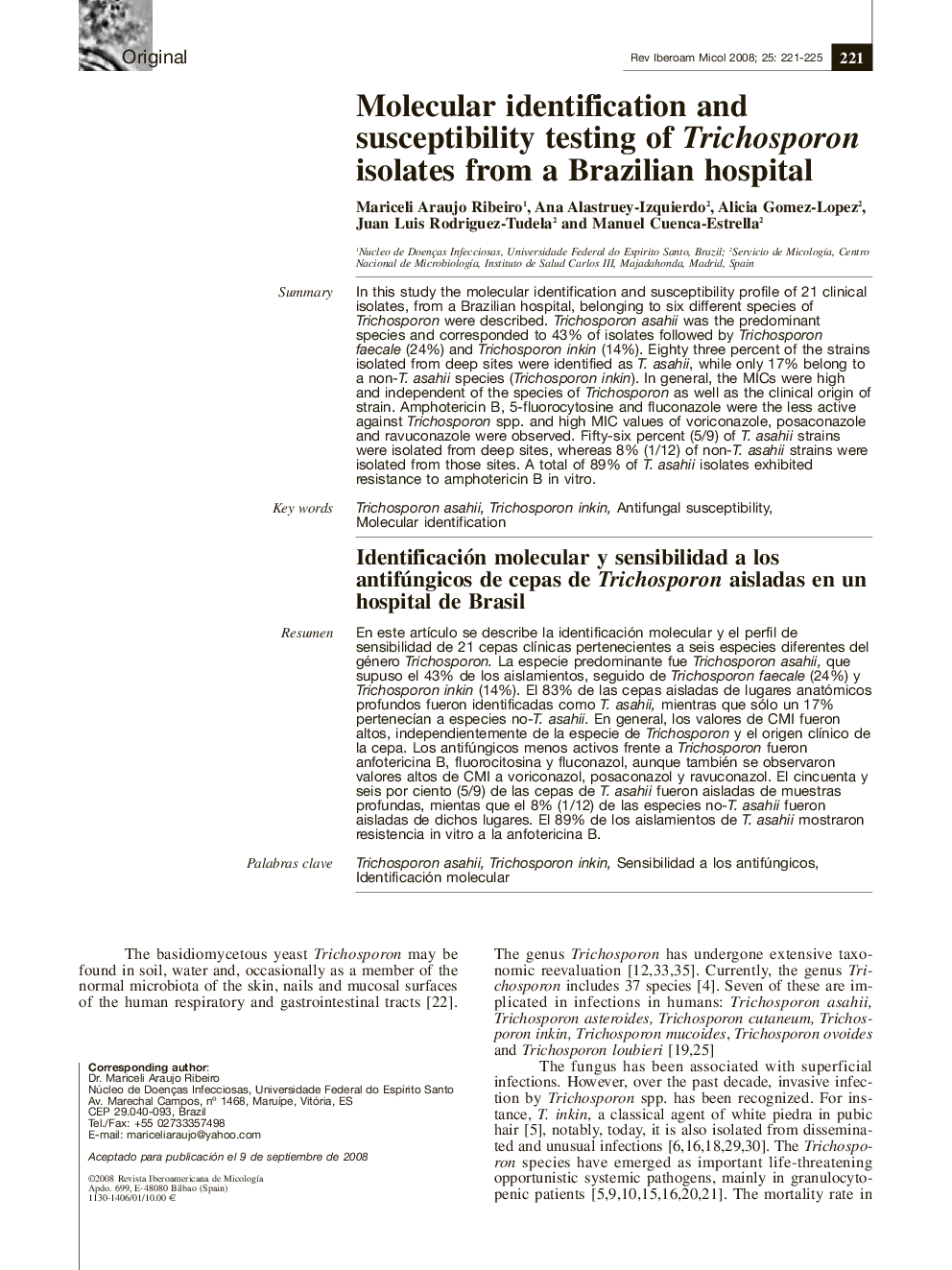| Article ID | Journal | Published Year | Pages | File Type |
|---|---|---|---|---|
| 3418998 | Revista Iberoamericana de Micología | 2008 | 5 Pages |
ResumenEn este artículo se describe la identificación molecular y el perfil de sensibilidad de 21 cepas clínicas pertenecientes a seis especies diferentes del género Trichosporon. La especie predominante fue Trichosporon asahii, que supuso el 43% de los aislamientos, seguido de Trichosporon faecale (24%) y Trichosporon inkin (14%). El 83% de las cepas aisladas de lugares anatómicos profundos fueron identificadas como T. asahii, mientras que sólo un 17% pertenecían a especies no-T. asahii. En general, los valores de CMI fueron altos, independientemente de la especie de Trichosporon y el origen clínico de la cepa. Los antifúngicos menos activos frente a Trichosporon fueron anfotericina B, fluorocitosina y fluconazol, aunque también se observaron valores altos de CMI a voriconazol, posaconazol y ravuconazol. El cincuenta y seis por ciento (5/9) de las cepas de T. asahii fueron aisladas de muestras profundas, mientas que el 8% (1/12) de las especies no-T. asahii fueron aisladas de dichos lugares. El 89% de los aislamientos de T. asahii mostraron resistencia in vitro a la anfotericina B.
SummaryIn this study the molecular identification and susceptibility profile of 21 clinical isolates, from a Brazilian hospital, belonging to six different species of Trichosporon were described. Trichosporon asahii was the predominant species and corresponded to 43% of isolates followed by Trichosporon faecale (24%) and Trichosporon inkin (14%). Eighty three percent of the strains isolated from deep sites were identified as T. asahii, while only 17% belong to a non-T. asahii species (Trichosporon inkin). In general, the MICs were high and independent of the species of Trichosporon as well as the clinical origin of strain. Amphotericin B, 5-fluorocytosine and fluconazole were the less active against Trichosporon spp. and high MIC values of voriconazole, posaconazole and ravuconazole were observed. Fifty-six percent (5/9) of T. asahii strains were isolated from deep sites, whereas 8% (1/12) of non-T. asahii strains were isolated from those sites. A total of 89% of T. asahii isolates exhibited resistance to amphotericin B in vitro.
